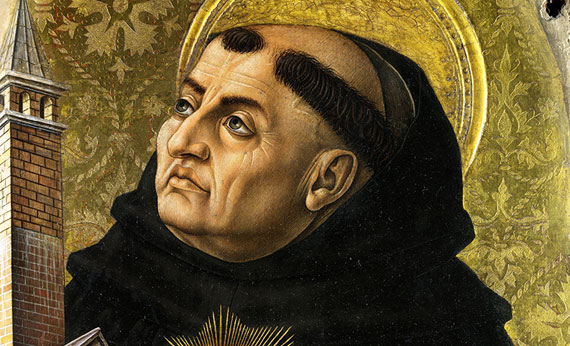Azadi ka Amrit Mahotsav Kolkata event honours four Clergymen
Pope Francis asks businesses to support working women: They’re ‘afraid to get pregnant’
Study: Christianity may lose majority, plurality status in U.S. by 2070
Indian politician declines Magsaysay Award under party pressure
Like John Paul II, Pope Francis heads to Kazakhstan during time of war

Also called Doctor Communis and Doctor Angelicus, Thomas Aquinas was a Dominican philosopher and theologian. He was born at Roccasecca near Aquino in the kingdom of Naples as the youngest son in an aristocratic family. At the age of 5 he was given to the Benedictine abbey of Monte Cassino in the expectation that he would eventually become abbot there. But he decided to join the Dominicans while studying at the University of Naples and after his reception in to the Order he was sent to Paris so that he might be out of reach of his powerful family’s opposition; but on his way there he was captured and confined in the family castle for nearly two years. On his release he began his theological studies in the University of Paris. Here he came under the influence of St Albert the Great with whom he continued his studies at Cologne. In 1256 he became Master of Theology. There began a comparatively short but very productive period of teaching and writing which produced many significant works in Christian theology. On 6 December, 1273, while saying Mass he underwent some mysterious traumatic experience which abruptly ended his teaching and writing. “Everything I have written seems like straw by comparison with what I have seen and what has been revealed to me” he reported.
Thomas Aquinas is the best known of all the theologians of the Middle Ages and the master figure of Scholasticism. Indeed after Augustine of Hippo he is widely considered the most incisive and influential of all Catholic theologians in the West. He wrote extensively on a wide range of topics, including commentaries on much of Scripture, but his most lasting contribution was the Summa Theologiae or Summa Theologica and the Summa Contra Gentiles. The first was a monumental work which excels both in clear and orderly presentation and in the depth and orthodoxy of its teaching, and covered almost the full course of theological topics. It was originally designed as a handbook for friars not bound for University study. It was interrupted by his early death, which prevented him from treating all the sacraments. The work has justly been called the great “cathedral of medieval theology” on account of its attention to detail and overall coherence and sublimity. It is notable for its sustained attempt to harmonize faith and reason, to show that God’s revelation in Jesus Christ goes beyond what our natural reason can grasp but does not conflict with it. Although Thomas accorded primacy to revelation, he recognized an autonomy proper to human reason and clearly delineated the spheres of faith and reason, maintaining the importance of philosophy and the sciences even for theology. The second was a treatise apparently designed for the use of Dominican missionaries in their dealing with non-Christians. With these two summae he set a high standard for theology.
At that time the reception of Aquinas’s writings was somewhat laboured. The archbishop of Paris, Etienne Tempier judged that his reconciliation of faith and reason was too favourable to the philosophy of Aristotle, whose works were becoming increasingly available in Europe around this time. He censured propositions associated with Aquinas in 1270 and 1277. The Dominican Order stoutly defended Aquinas’s orthodoxy. He was canonized as a saint by Pope John XXII in 1323. Later in 1567 he was declared a Doctor of the Church by the Dominican Pope Pius V. The elevation of his teaching to privileged status within the Catholic Church came about in two stages. First during the sixteenth century due especially to papal endorsement of his teaching and the masterly commentary on his Summa Theologiae by the Dominican Cardinal Thomas Cajetan and secondly from the late nineteenth to the mid-twentieth century when a succession of Popes beginning with Leo XIII, in cooperation with the Dominican Order gave strong support to his teaching. In 1880 Thomas was declared patron of all Catholic Universities. Although the period after the Second Vatican Council saw a critical reappraisal of Scholasticism and Neo-Scholasticism, one can agree with Pope Paul VI who proposed Thomas as a model for theologians not only for his doctrinal position but also for his openness to the world of his day.
Isaac Padinjarekuttu
(Professor of Church History
at Oriens Theological College, Shillong)
Leave a Comment